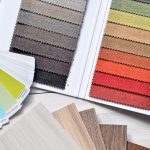Discover the shocking truth about water use in fabric production.
You’ll be amazed at the excessive amount of water consumed in cotton farming and textile dyeing.
Prepare to be appalled by the devastating effects of water pollution in fabric production.
And brace yourself for the high water waste in fabric finishing processes.
But don’t worry, we’ll also explore how we can promote sustainable practices to tackle these issues.
Get ready to be enlightened about the hidden water crisis in the fabric industry.
Table of Contents
Alarming Water Consumption in Cotton Farming
You consume a staggering amount of water in cotton farming. The production of cotton requires an immense quantity of water, making it one of the most water-intensive crops in the world. This excessive water usage has significant environmental implications, such as depletion of freshwater resources and the release of harmful chemicals into water bodies.
To address this issue, water-saving techniques have been developed to minimize water consumption in cotton farming. These techniques include drip irrigation, which delivers water directly to the plant’s roots, reducing evaporation and water wastage. Another approach is the use of precision agriculture, where advanced technologies such as sensors and data analysis are employed to optimize irrigation practices.
Additionally, the development of alternative fabric materials offers a promising solution to reduce water consumption. Fabrics like hemp, bamboo, and organic cotton require less water to grow and can be viable substitutes for conventional cotton.
Excessive Water Use in Textile Dyeing
Are you aware of the excessive water use in textile dyeing? This process is notorious for its high water consumption, leading to environmental concerns.
But what sustainable dyeing solutions and water conservation strategies can be implemented to address this issue?
Sustainable Dyeing Solutions
To address the excessive water use in textile dyeing, it is crucial to explore sustainable dyeing solutions. By adopting sustainable dyeing techniques and using eco-friendly colorants, the textile industry can significantly reduce its water consumption and environmental impact. Sustainable dyeing techniques focus on minimizing water usage, promoting resource efficiency, and reducing pollution. One such technique is the use of low-water or waterless dyeing processes, which eliminate the need for large amounts of water. Additionally, eco-friendly colorants, such as natural dyes derived from plants and non-toxic synthetic dyes, can be used as alternatives to conventional chemical dyes. These colorants are biodegradable and have minimal impact on aquatic ecosystems. By implementing these sustainable dyeing solutions, the textile industry can contribute to a more environmentally conscious and water-efficient future.
| Sustainable Dyeing Techniques | Eco-Friendly Colorants | Benefits |
|---|---|---|
| Low-water or waterless dyeing processes | Natural dyes derived from plants | Minimizes water consumption and pollution |
| Non-toxic synthetic dyes | Biodegradable and minimal impact on aquatic ecosystems |
Water Conservation Strategies?
To address the excessive water use in textile dyeing, implementing water conservation strategies is crucial. Here are four effective strategies that can help reduce water consumption in fabric production:
-
Adopting water saving technologies: Investing in advanced machinery and equipment that optimize water usage can significantly reduce the amount of water needed for textile dyeing. These technologies improve the efficiency of dyeing processes, resulting in less water wastage.
-
Implementing recycling systems: Installing water recycling systems allows for the reuse of water in textile dyeing. By treating and purifying wastewater, it can be recycled and used again, reducing the overall water footprint of fabric production.
-
Optimizing dyeing processes: Streamlining dyeing processes and using precise dye application techniques can minimize water usage. By accurately controlling the amount of water and dye required, excess water can be eliminated.
-
Promoting water footprint reduction: Educating and raising awareness among fabric manufacturers about the importance of reducing their water footprint can encourage the adoption of sustainable practices. This includes implementing water-saving measures and continuously monitoring water usage to identify areas for improvement.
Devastating Effects of Water Pollution in Fabric Production
Water pollution in fabric production has devastating effects on the environment. The discharge of toxic chemicals and dyes into water bodies not only harms aquatic life but also contaminates the water supply for communities.
Moreover, the excessive use and pollution of water contribute to water scarcity concerns globally.
It’s crucial for the industry to adopt sustainable production solutions to mitigate these harmful effects and ensure a cleaner and more sustainable future.
Environmental Impact of Pollution
You frequently witness the devastating effects of water pollution in fabric production. It’s a harsh reality that the fashion industry, with its high water consumption, contributes significantly to water pollution. However, there are ways to prevent this environmental impact and promote more sustainable practices.
Here are some innovative fabric production methods that can help mitigate water pollution:
-
Waterless dyeing techniques: These methods eliminate the need for excessive water usage during the dyeing process, reducing the amount of polluted water discharged into water bodies.
-
Closed-loop systems: Implementing closed-loop systems allows for the recycling and reuse of water in fabric production, minimizing the release of harmful pollutants.
-
Natural and eco-friendly dyes: Using natural and eco-friendly dyes instead of traditional chemical dyes can significantly reduce the pollution caused by fabric production.
-
Water treatment technologies: Investing in advanced water treatment technologies can help remove pollutants from wastewater before it’s discharged, protecting water ecosystems.
Water Scarcity Concerns
If you continue with unsustainable fabric production methods, the devastating effects of water pollution will exacerbate the already concerning issue of water scarcity.
To address this problem, it’s crucial to implement water saving technologies and water management initiatives in fabric production. These technologies can significantly reduce water usage and minimize the risk of water pollution.
By adopting more sustainable practices, such as recycling and treating wastewater, fabric manufacturers can conserve precious water resources and minimize their impact on the environment.
Additionally, water management initiatives, such as implementing water usage monitoring systems and setting water reduction targets, can help regulate and optimize water consumption in the industry.
Taking proactive measures to mitigate water pollution and conserve water resources is essential to ensure a sustainable future for the fabric production industry.
Sustainable Production Solutions
By implementing sustainable production solutions, you can effectively address the devastating effects of water pollution in fabric production. Here are some innovative technologies and practices that can help mitigate water pollution and promote a circular economy:
-
Waterless dyeing: Utilizing innovative dyeing techniques that require little to no water can significantly reduce water pollution.
-
Closed-loop systems: Implementing closed-loop systems in fabric production ensures that water is recycled and reused, minimizing the discharge of polluted water into ecosystems.
-
Green chemistry: Using environmentally friendly chemicals and processes in fabric production can help reduce water pollution and its harmful effects.
-
Water treatment facilities: Investing in advanced water treatment facilities can help remove pollutants from wastewater before it’s discharged, protecting water bodies and ecosystems.
High Water Waste in Fabric Finishing Processes
Fabric finishing processes contribute significantly to the high water waste in the industry. These processes, which include dyeing, printing, and treating fabrics, require large quantities of water. The excessive water usage not only strains valuable water resources but also leads to a high water footprint in fabric production.
To address this issue, manufacturers are increasingly adopting water-saving technologies and implementing strategies for water footprint reduction. These technologies and strategies aim to minimize water consumption and optimize the efficiency of fabric finishing processes.
One such technology is the use of closed-loop systems, which recycle and reuse water throughout the finishing process. By recirculating water, these systems significantly reduce the amount of fresh water needed and minimize wastewater generation. Additionally, advanced dyeing and printing techniques, such as digital printing and pigment printing, require less water compared to traditional methods.
Furthermore, manufacturers are implementing water management practices, such as water auditing and monitoring, to identify areas of high water consumption and implement measures for improvement. These practices help in identifying potential water-saving opportunities and optimizing water usage throughout the fabric finishing processes.
Impact of Water Scarcity on Global Fabric Production
Water scarcity poses a significant challenge to global fabric production, impacting the availability and sustainability of water resources for fabric finishing processes. As water becomes scarcer, the fabric industry must find ways to adapt and address this issue. Here are four key points to consider:
-
Water saving technologies: In response to water scarcity, the fabric industry is increasingly adopting water-saving technologies. These technologies aim to reduce water consumption during fabric production, minimizing wastage and maximizing efficiency.
-
Innovative fabric production: With water scarcity in mind, fabric manufacturers are developing innovative production methods that require less water. These methods include using alternative materials that require less water during the manufacturing process.
-
Sustainable water management: To mitigate the impact of water scarcity, fabric producers are implementing sustainable water management strategies. This involves carefully monitoring and managing water usage throughout the production process, as well as implementing recycling and reuse systems.
-
Collaboration and partnerships: Addressing water scarcity requires collaboration among various stakeholders in the fabric industry. Manufacturers, suppliers, and consumers must work together to develop and implement sustainable solutions, such as sharing best practices and promoting water conservation awareness.
Promoting Sustainable Practices in Fabric Manufacturing
Implementing sustainable practices is crucial for promoting environmental stewardship in fabric manufacturing. By adopting sustainable sourcing and eco-friendly manufacturing methods, fabric manufacturers can significantly reduce their carbon footprint and contribute to a greener future.
One way to promote sustainable practices in fabric manufacturing is through sustainable sourcing. This involves procuring raw materials from sustainable and responsibly managed sources. By choosing materials that are grown or produced in an environmentally friendly manner, fabric manufacturers can minimize the negative impact on natural resources and ecosystems. For example, sourcing organic cotton instead of conventional cotton reduces the use of harmful pesticides and promotes soil health.
Another important aspect of promoting sustainable practices in fabric manufacturing is adopting eco-friendly manufacturing processes. This includes reducing energy consumption, minimizing waste generation, and implementing recycling and reuse programs. Fabric manufacturers can invest in energy-efficient machinery, optimize production processes, and implement water and waste management systems to minimize their environmental impact.
To illustrate the benefits of sustainable practices in fabric manufacturing, consider the following table:
| Sustainable Practice | Environmental Benefit |
|---|---|
| Sustainable sourcing | Reduces deforestation and water pollution |
| Eco-friendly manufacturing | Decreases greenhouse gas emissions and waste generation |
Frequently Asked Questions
How Does Water Scarcity Affect the Global Fabric Production Industry?
Water scarcity significantly impacts the global fabric production industry. With limited access to water, textile manufacturers struggle to meet the demand for water-intensive processes, leading to reduced production capacity and higher costs.
What Are Some Sustainable Practices That Can Be Implemented in Fabric Manufacturing to Reduce Water Waste?
To reduce water waste in fabric manufacturing, you can implement water saving technologies and sustainable dyeing methods. These practices help conserve water resources and promote a more environmentally friendly production process.
What Are the Main Factors Contributing to High Water Consumption in Cotton Farming?
The main factors contributing to high water consumption in cotton farming are irrigation practices and the water-intensive nature of cotton plants. Water conservation techniques and exploring alternative fiber options can help address this issue.
How Does Excessive Water Use in Textile Dyeing Contribute to Environmental Pollution?
Excessive water use in textile dyeing contributes to environmental pollution by releasing harmful chemicals and dyes into water bodies. This impacts aquatic life and ecosystems. Textile industry regulations can help reduce water pollution impact.
What Are the Potential Long-Term Effects of Water Pollution Caused by Fabric Production on Ecosystems and Human Health?
Water pollution impacts ecosystems and human health. Excessive water use in fabric production causes environmental damage and contributes to pollution. The potential long-term effects include ecosystem disruption and negative health consequences for humans.
- Top 10 Trends in Sustainable Fashion - July 17, 2024
- Fabric Dyeing Techniques: A Historical Exploration - July 17, 2024
- Famous Fabric Designers: Innovators and Pioneers - July 17, 2024




